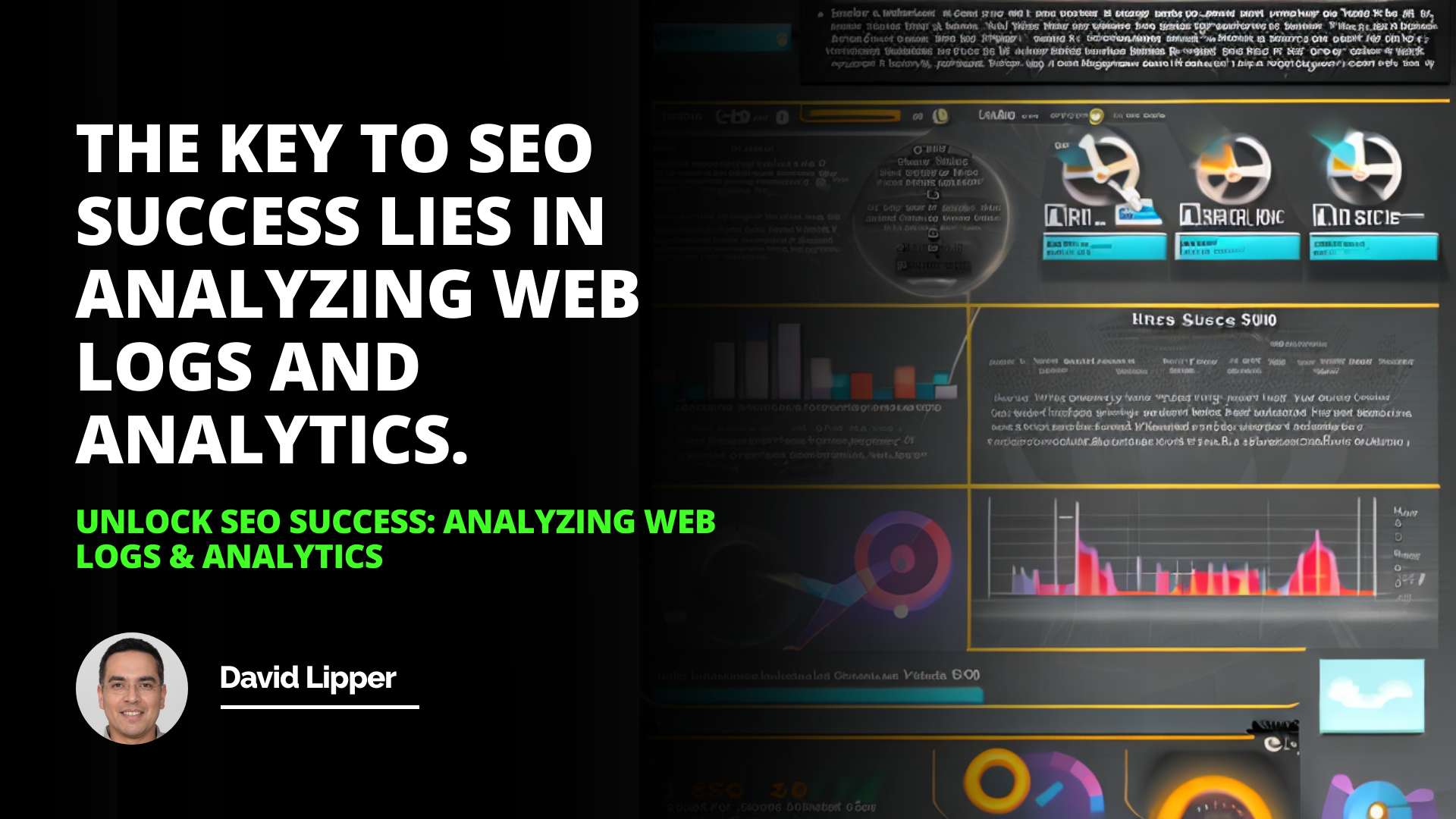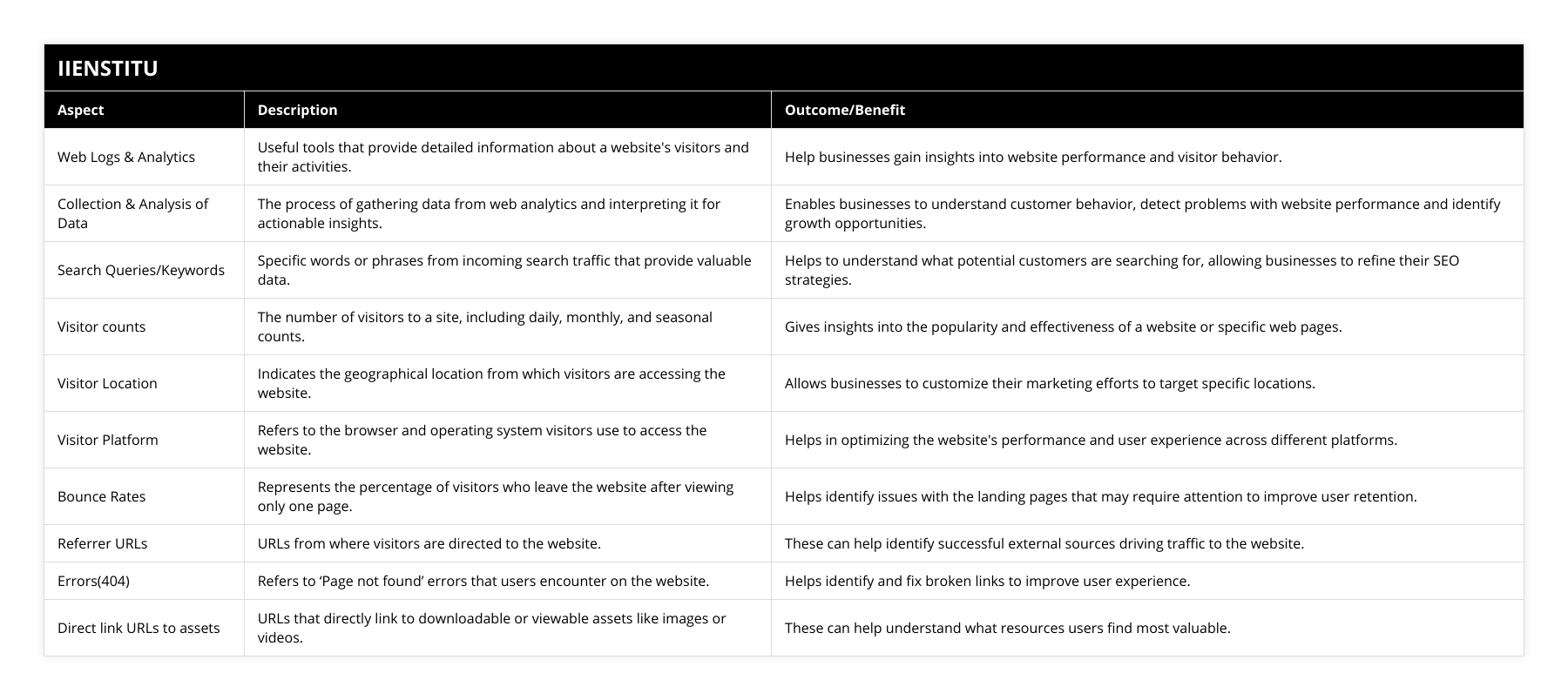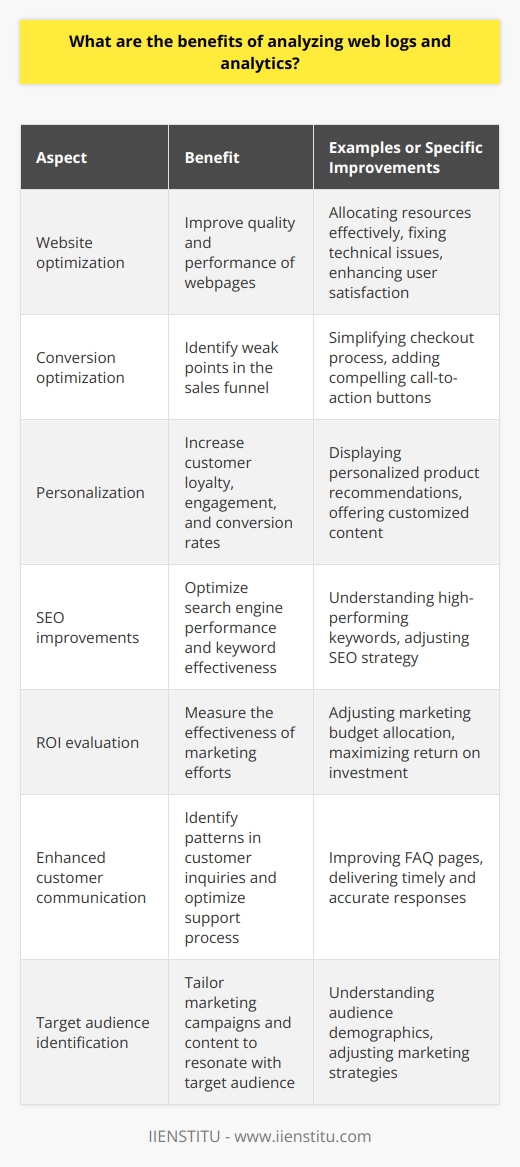
This article discussed the fundamentals of web logs and analytics, the benefits of collecting and analyzing data, and the advantages of using web logs and analytics.
Introduction
Understanding Web Logs & Analytics
Collecting & Analyzing Data
Benefits of Web Logs & Analytics
Conclusion
Introduction: Web Logs and Analytics are essential tools for businesses and organizations to understand the behavior of their customers and visitors. By collecting and analyzing data from web logs, companies can gain insight into how their websites are performing and how they can improve their customer experience. This article will discuss the fundamentals of web logs and analytics, the benefits of collecting and analyzing data, and the advantages of using web logs and analytics.
Understanding Web Logs & Analytics
Web logs are files that contain detailed information about a website’s visitors and their activities. They provide information such as visitor IP address, date and time of visit, pages visited, referrer URL, and search queries. Web analytics collects and analyzes web log data to gain insights into website performance and visitor behavior.
Collecting & Analyzing Data
The most valuable data that can be collected from a web analytics package is a list of search queries or keywords from incoming search traffic. Additionally, page-level information about site traffic can be helpful, such as visitor counts (daily, monthly, and seasonal), visitor location, visitor platform (browser and operating system), bounce rates, inbound link (or “referrer”) URLs, direct link URLs to assets such as images or videos, and 404 “page not found” errors. It is also possible to get a CSV export of valuable data, which can be added as a new tab in a keyword spreadsheet.
Benefits of Web Logs & Analytics
Web logs and analytics give businesses valuable insights into their websites and customer behavior. They can be used to identify improvement areas, problems with website performance, and growth opportunities. Web logs and analytics can also help businesses understand customer preferences and effectively target their marketing efforts.
Conclusion: Weblogs and analytics are essential tools for businesses and organizations to understand the behavior of their customers and visitors. By collecting and analyzing data from weblogs, companies can gain insight into how their websites are performing and how they can improve their customer experience. The benefits of collecting and analyzing web log data include identifying areas of improvement, identifying problems with website performance, and targeting marketing efforts more effectively.
The key to SEO success lies in analyzing web logs and analytics.

Frequently Asked Questions
What are the benefits of analyzing web logs and analytics?
Analyzing web logs and analytics can be a powerful tool for businesses and organizations with an online presence. By gathering and analyzing data, companies can better understand their customer’s behaviors and preferences, gain insight into their competitors’ strategies, and measure their performance. This article will explore the benefits of analyzing web logs and analytics, including improved customer experience, competitive advantage, and marketing strategy.
Firstly, analyzing web logs and analytics can provide businesses valuable insight into the customer experience. By understanding how customers interact with their websites, companies can identify areas of improvement to provide a better customer experience. This includes understanding which pages customers spend the most time on and which they are most likely to leave. Businesses can adjust their website design and content by analyzing this data to optimize the customer experience.
Secondly, analyzing web logs and analytics can give businesses a competitive edge. By understanding how their competitors perform, companies can better position themselves in the market and identify opportunities to provide customers with a better experience. This can include identifying trends in customer behavior and preferences that the business can exploit. Additionally, companies can gain insight into their competitors’ strategies, such as their promotional tactics and pricing models.
Finally, analyzing web logs and analytics can help businesses to develop an effective marketing strategy. By understanding how customers interact with their websites, companies can create targeted campaigns that are more likely to be successful. Additionally, by understanding customer behavior, businesses can decide where to invest their marketing budget to get the best return on investment.
In conclusion, analyzing web logs and analytics can be an invaluable tool for businesses that have an online presence. By gathering and analyzing data, companies can gain valuable insights into their customers’ behaviors and preferences, gain a competitive advantage, and develop an effective marketing strategy.

How can I use web logs and analytics to improve my SEO success?
Search engine optimization (SEO) is a crucial part of any digital marketing strategy, and web logs and analytics can play an essential role in improving SEO success. Web logs are records of a website’s activities, such as visitors, content, and other technical details. At the same time, analytics are the tools used to analyze the data contained within weblogs.
Using web logs and analytics, website owners can gain valuable insights into the performance of their websites and use this data to make strategic adjustments to their SEO campaigns. For example, weblogs can be used to identify the most popular pages on a website and the most frequently visited pages. Knowing this information can help website owners optimize their content for the most popular pages, improving their SEO success. Web logs can also be used to identify technical issues that are hampering a website’s performance. This can allow website owners to fix any problems and ensure that their website is running optimally.
Analytics can also be used to identify which keywords are performing best and which keywords need to be improved. By using analytics, website owners can identify the most effective keywords and optimize their content for those keywords. This can help improve the visibility of a website in search engine results pages and ultimately lead to increased website traffic and improved SEO success.
Finally, web logs and analytics can be used to measure the success of SEO campaigns. By tracking the performance of a website’s SEO campaigns over time, website owners can identify which strategies are working and which need to be improved. This can ultimately lead to more successful SEO campaigns and improved SEO success.
In conclusion, web logs and analytics can be highly effective tools for improving SEO success. Using web logs to identify popular pages and technical issues and analytics to identify the most effective keywords, website owners can make strategic adjustments to their SEO campaigns and measure their success. Ultimately, this can lead to increased website traffic and improved SEO success.

What data should I collect and analyze to unlock SEO success?
Unlocking SEO success requires carefully considering what data needs to be collected and analyzed. There are various factors to consider when determining which data is vital to collect and analyze. It is essential to consider the purpose of the data, the resources available for collection and analysis, and the potential impact the data can have on SEO success.
When determining what data should be collected and analyzed, it is essential to consider the purpose of the data. SEO success relies on understanding the behavior of users, so it is essential to collect data that can help provide insight into user behavior. This includes web traffic, page views, and click-through rates. It is also essential to consider what kind of data can help inform content strategy. This includes data on trending topics, keywords that are performing well, and user-generated content.
In addition to considering the specific data that should be collected and analyzed, it is essential to consider the resources available for data collection and analysis. Different resources can provide various data types, so it is necessary to understand which resources are available and which are required to collect the data needed to unlock SEO success. Additionally, it is essential to consider the resources available to analyze the data collected. This includes resources such as analytics software, which can provide insights into user behavior and trends.
Finally, it is essential to consider the potential impact of the data collected and analyzed on SEO success. Different types of data can provide additional insights into user behavior and trends and thus have other implications for SEO success. For example, data on web traffic can provide insight into how users find and interact with a website. In contrast, keyword data can provide insight into what topics are trending and how users search for content. By understanding the potential impact of the data collected and analyzed, companies can better determine which data is most important for unlocking SEO success.
In conclusion, unlocking SEO success requires carefully considering what data should be collected and analyzed. It is essential to consider the purpose of the data, the resources available for collection and analysis, and the potential impact the data can have on SEO success. By carefully considering these factors, companies can better determine which data is most important for unlocking SEO success.



